Abstract
The chemical identity of vitamin D in the egg of the domestic fowl was studied by analysing radioactivity in eggs from hens injected with [3H]cholecalciferol. Labelled molecules were found throughout the egg, but the concentration of total radioactivity in albumin was only 5-7% of that in yolk. In lipid extracts of yolk, more than 90% of the radioactivity was as unchanged cholecalciferol and 5% as 25-hydroxycholecalciferol. Only about 3% of the radioactivity in albumin was chloroform-soluble, and of this 40% was 25-hydroxycholecalciferol and 15% was cholecalciferol. Evidence is presented to support the idea that the specific transport of cholecalciferol into yolk is mediated by a cholecalciferol-binding protein in blood. This protein forms a complex with yolk proteins in transit from liver to ovary via the blood. A cholecalciferol-binding protein, chromatographically similar to that from blood, was found in egg yolk. It is postulated that cholecalciferol forms part of a complex with its specific binding protein, Ca2+ and the yolk phosphoprotein, phosvitin. This complex is then incorporated into yolk by the thecal cells of the ovarian follicle.
Full text
PDF
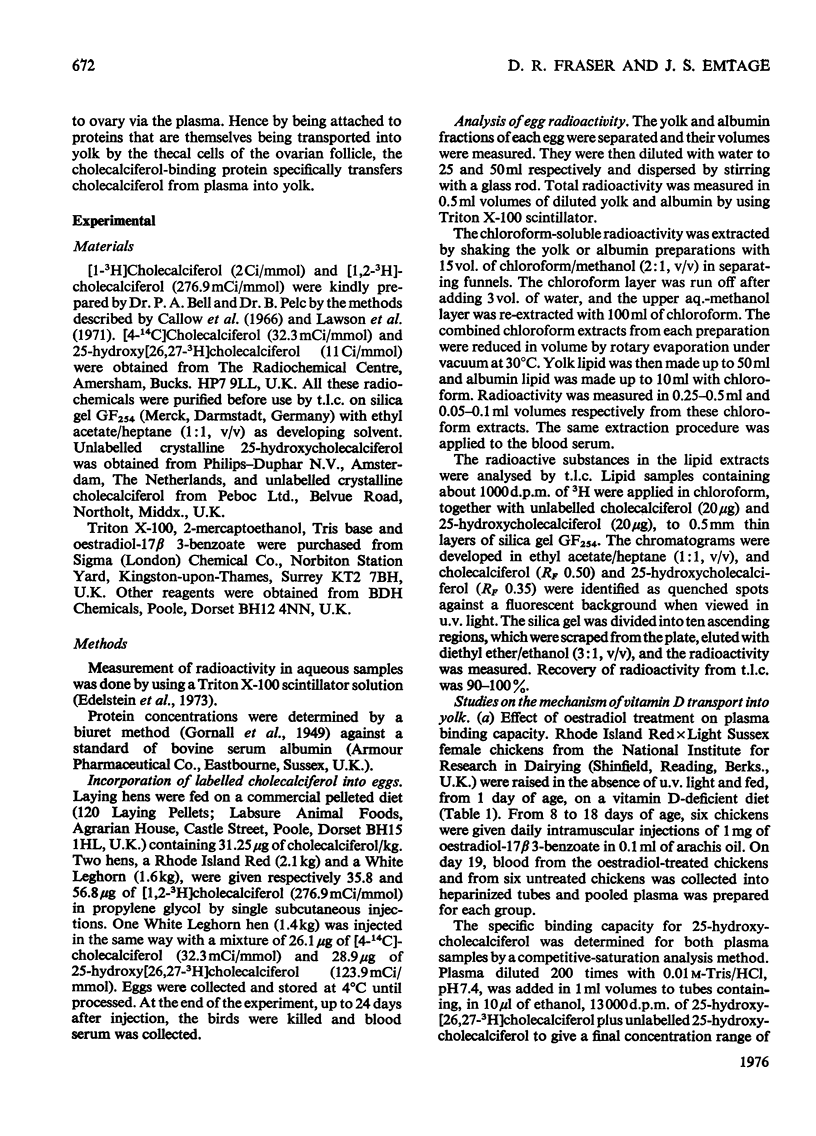
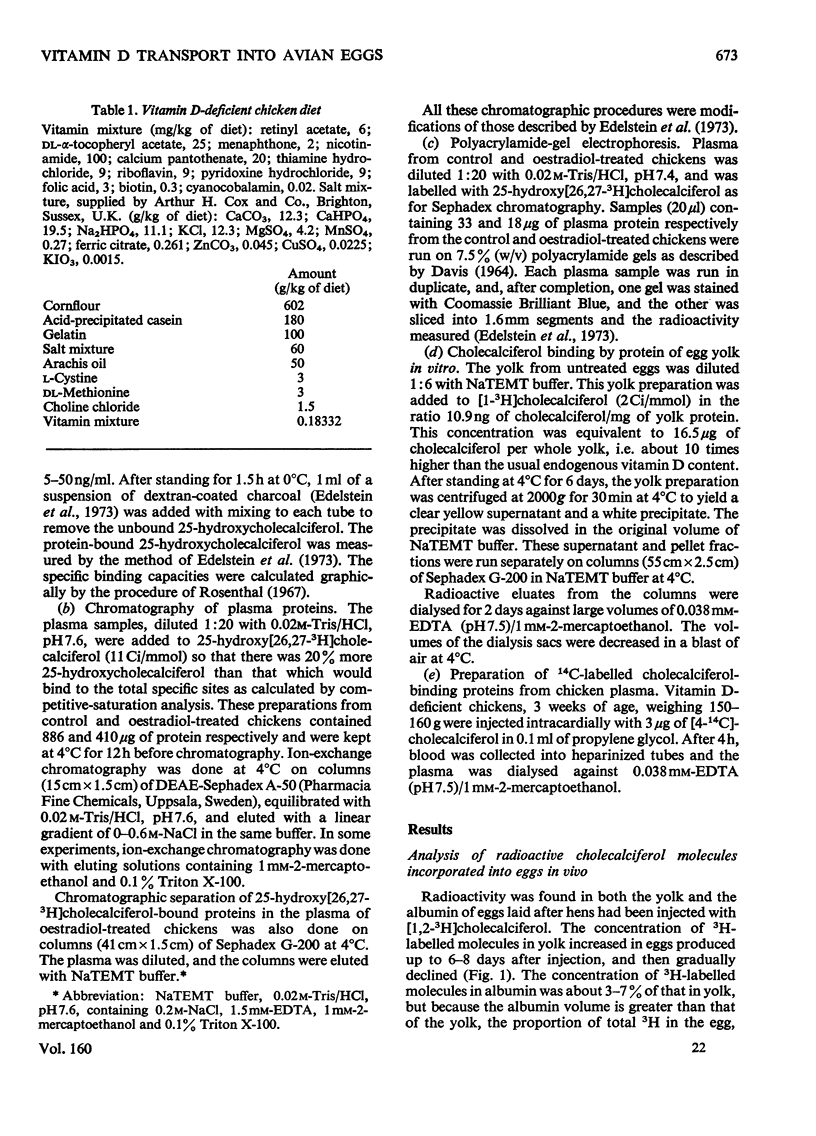

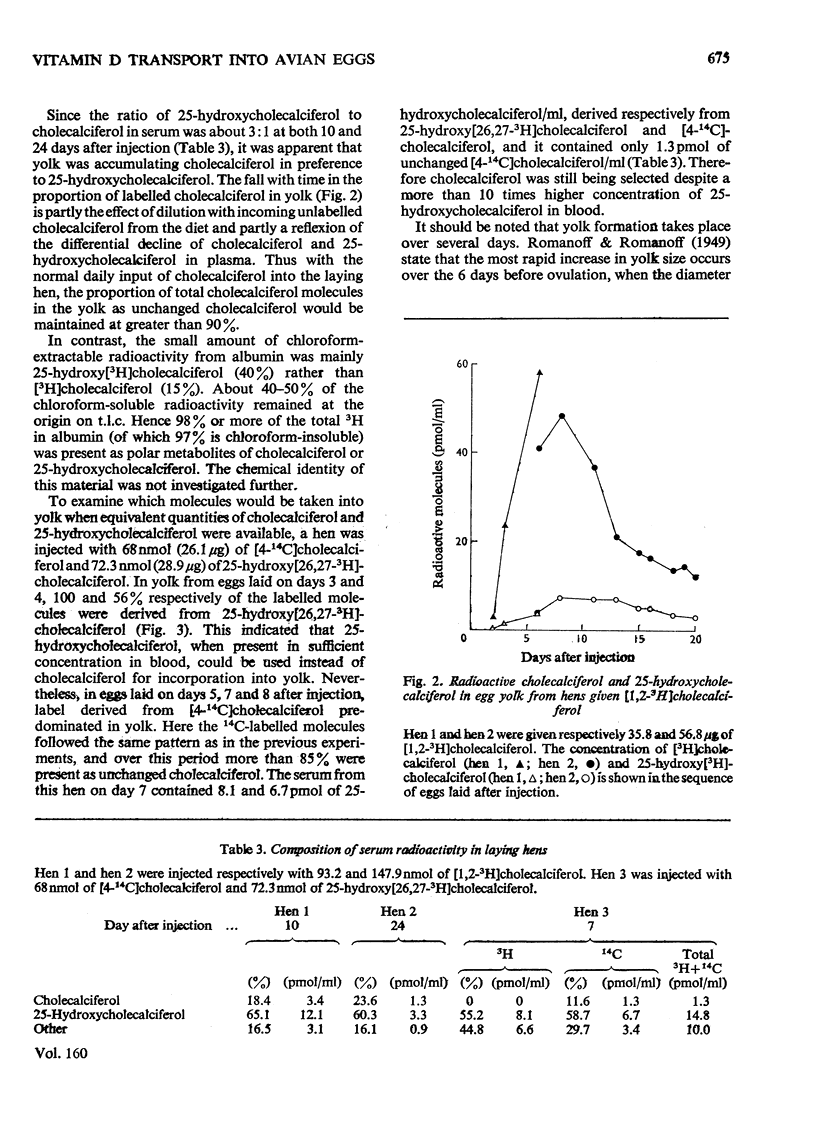
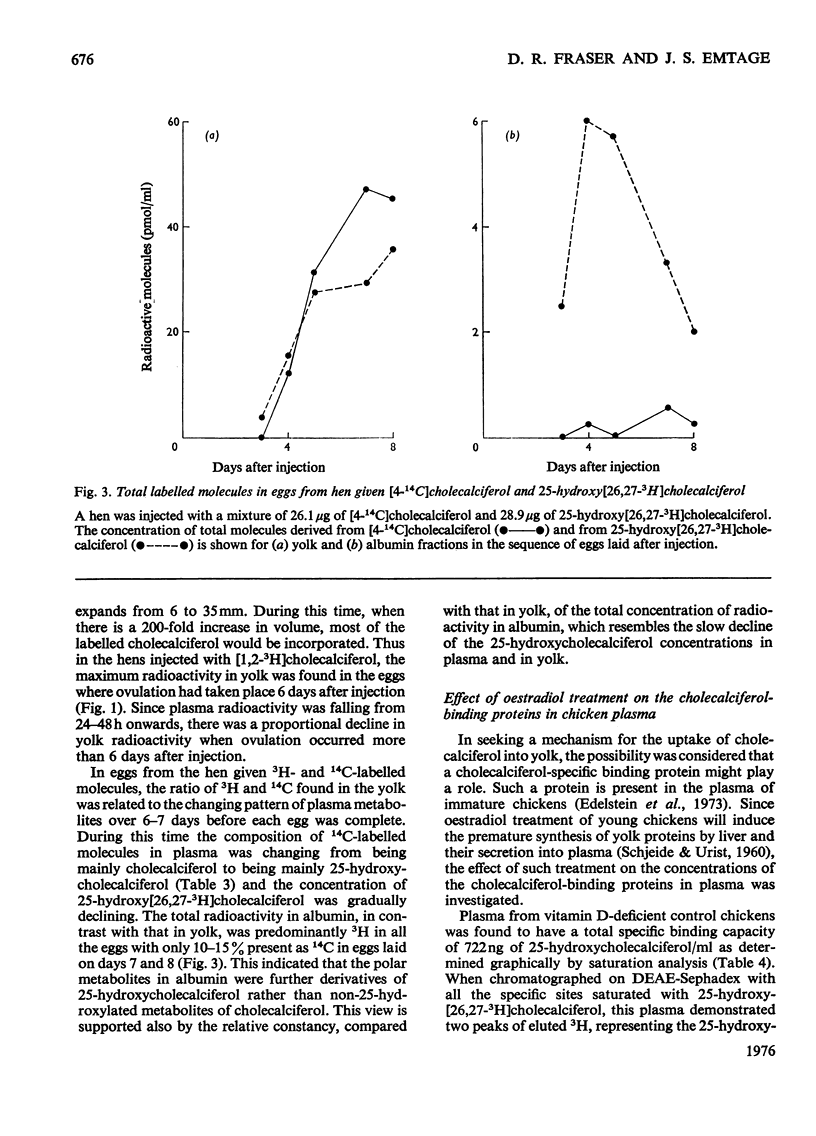

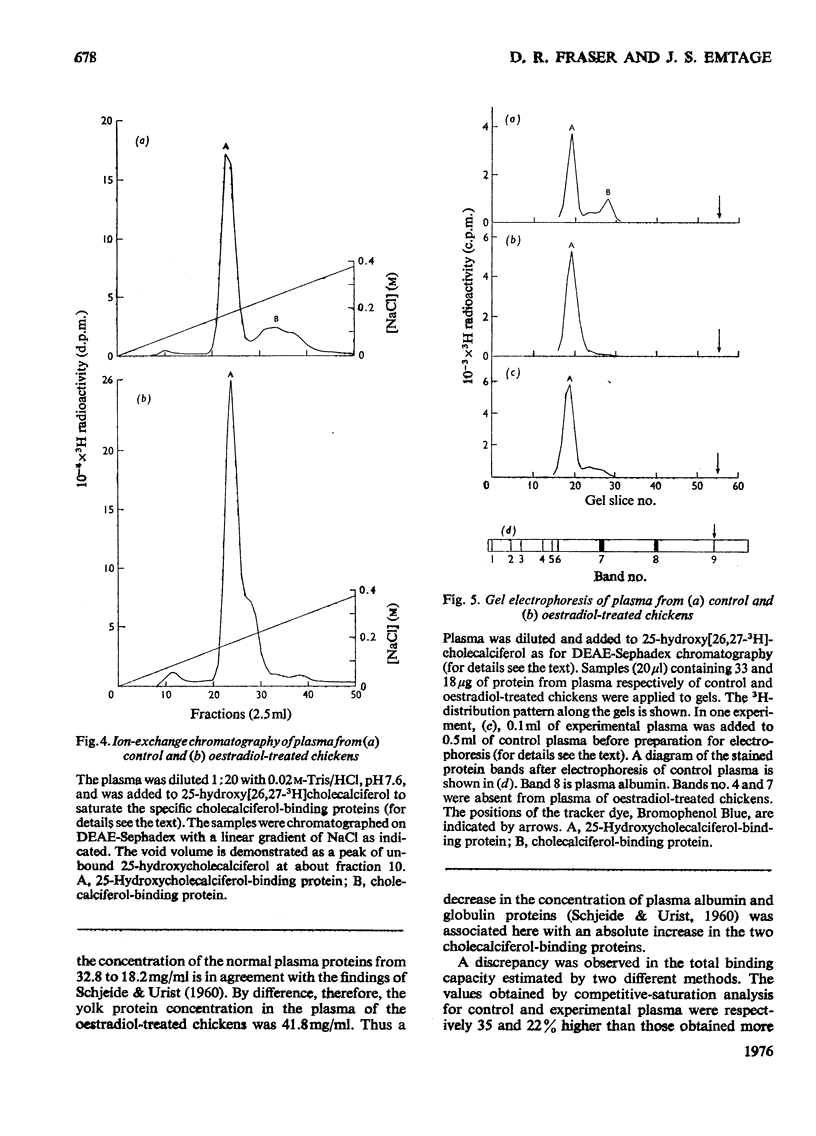

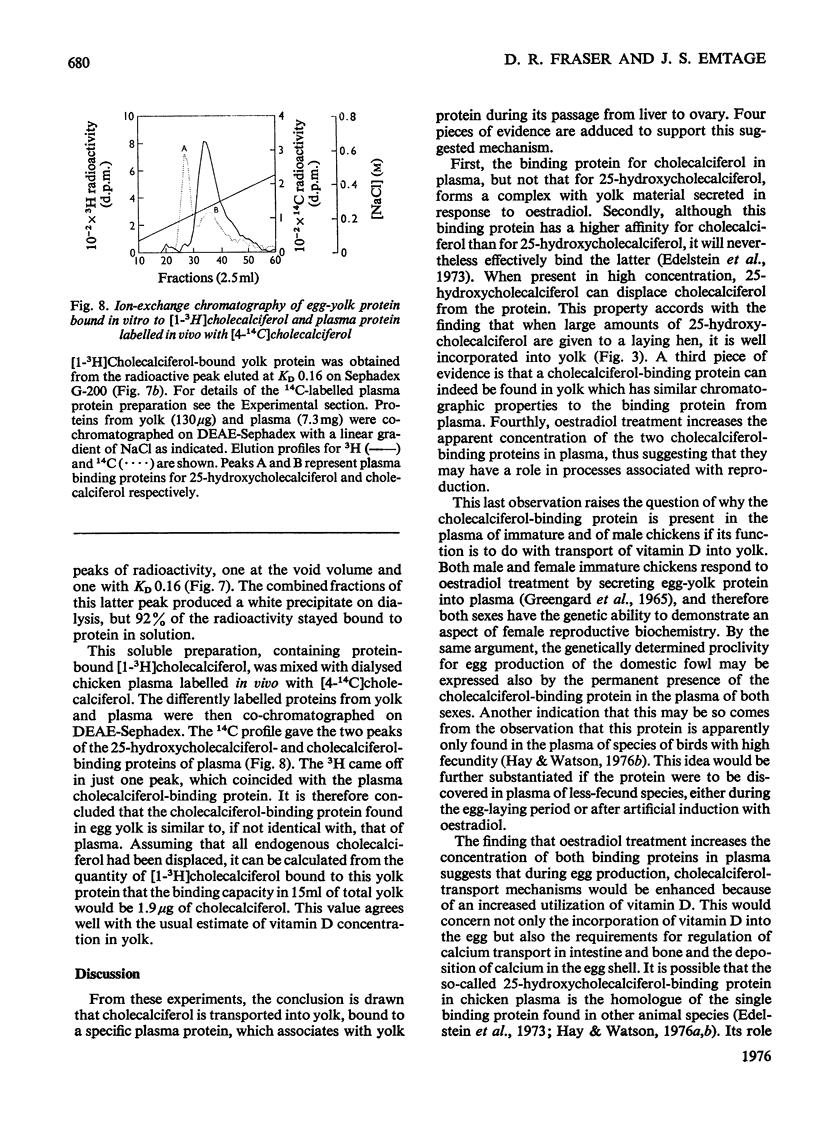
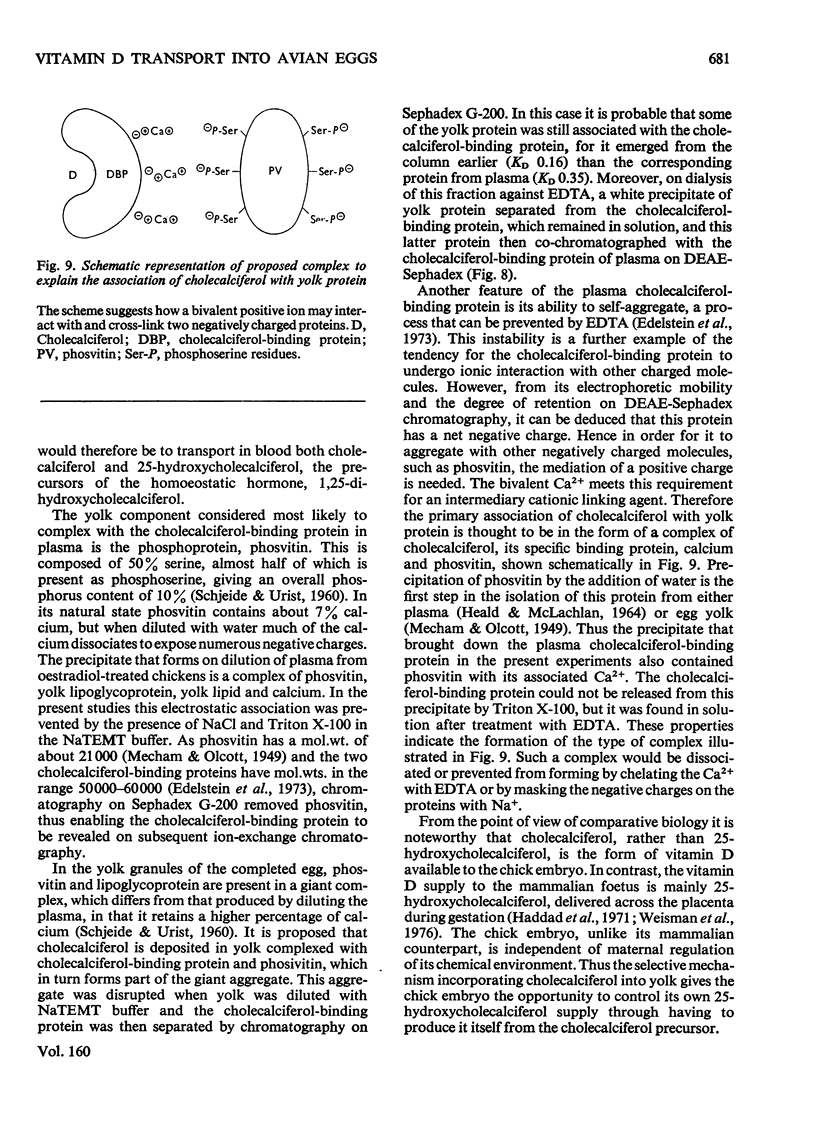
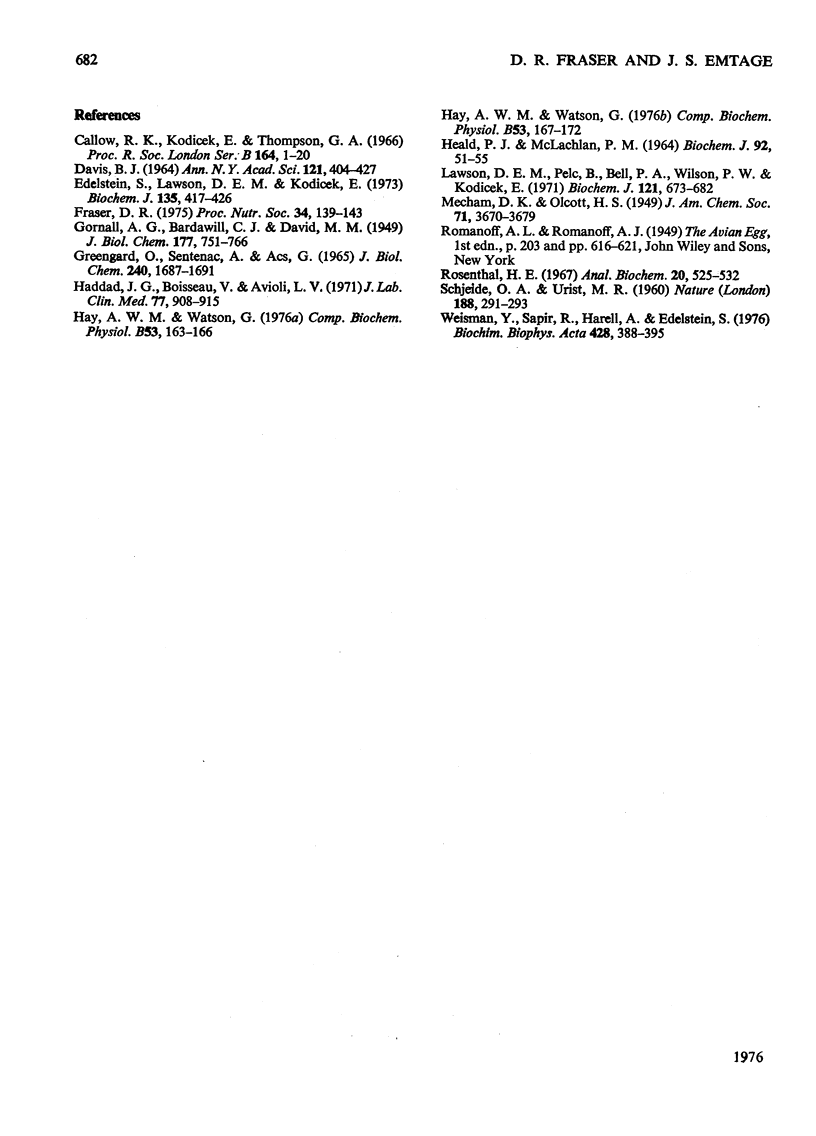
Selected References
These references are in PubMed. This may not be the complete list of references from this article.
- Callow R. K., Kodicek E., Thompson G. A. Metabolism of tritiated vitamin D. Proc R Soc Lond B Biol Sci. 1966 Feb 15;164(994):1–20. doi: 10.1098/rspb.1966.0010. [DOI] [PubMed] [Google Scholar]
- DAVIS B. J. DISC ELECTROPHORESIS. II. METHOD AND APPLICATION TO HUMAN SERUM PROTEINS. Ann N Y Acad Sci. 1964 Dec 28;121:404–427. doi: 10.1111/j.1749-6632.1964.tb14213.x. [DOI] [PubMed] [Google Scholar]
- Edelstein S., Lawson D. E., Kodicek E. The transporting proteins of cholecalciferol and 25-hydroxycholecalciferol in serum of chicks and other species. Partial purification and characterization of the chick proteins. Biochem J. 1973 Nov;135(3):417–426. doi: 10.1042/bj1350417. [DOI] [PMC free article] [PubMed] [Google Scholar]
- Fraser D. R. Advances in the knowledge of the metabolism of vitamin D. Proc Nutr Soc. 1975 Sep;34(2):139–143. doi: 10.1079/pns19750024. [DOI] [PubMed] [Google Scholar]
- GREENGARD O., SENTENAC A., ACS G. INDUCED FORMATION OF PHOSPHOPROTEIN IN TISSUES OF COCKERELS IN VIVO AND IN VITRO. J Biol Chem. 1965 Apr;240:1687–1691. [PubMed] [Google Scholar]
- Haddad J. G., Jr, Boisseau V., Avioli L. V. Placental transfer of vitamin D3 and 25-hydroxycholecalciferol in the rat. J Lab Clin Med. 1971 Jun;77(6):908–915. [PubMed] [Google Scholar]
- Heald P. J., McLachlan The isolation of phosvitin from the plasma of the oestrogen-treated immature pullet. Biochem J. 1964 Jul;92(1):51–55. doi: 10.1042/bj0920051. [DOI] [PMC free article] [PubMed] [Google Scholar]
- Lawson D. E., Pelc B., Bell P. A., Wilson P. W., Kodicek E. Synthesis of (1,2- 3 H 2 )cholecalciferol and metabolism of (4- 14 C,1,2- 3 H 2 )- and (4- 14 C,1- 3 H)-cholecalciferol in rachitic rats and chicks. Biochem J. 1971 Feb;121(4):673–682. doi: 10.1042/bj1210673. [DOI] [PMC free article] [PubMed] [Google Scholar]
- Rosenthal H. E. A graphic method for the determination and presentation of binding parameters in a complex system. Anal Biochem. 1967 Sep;20(3):525–532. doi: 10.1016/0003-2697(67)90297-7. [DOI] [PubMed] [Google Scholar]
- SCHJEIDE O. A., URIST M. R. Proteins induced in plasma by oestrogens. Nature. 1960 Oct 22;188:291–294. doi: 10.1038/188291a0. [DOI] [PubMed] [Google Scholar]
- Weisman Y., Sapir R., Harell A., Edelstein S. Maternal-perinatal interrelationships of vitamin D metabolism in rats. Biochim Biophys Acta. 1976 Apr 23;428(2):388–395. doi: 10.1016/0304-4165(76)90046-5. [DOI] [PubMed] [Google Scholar]


